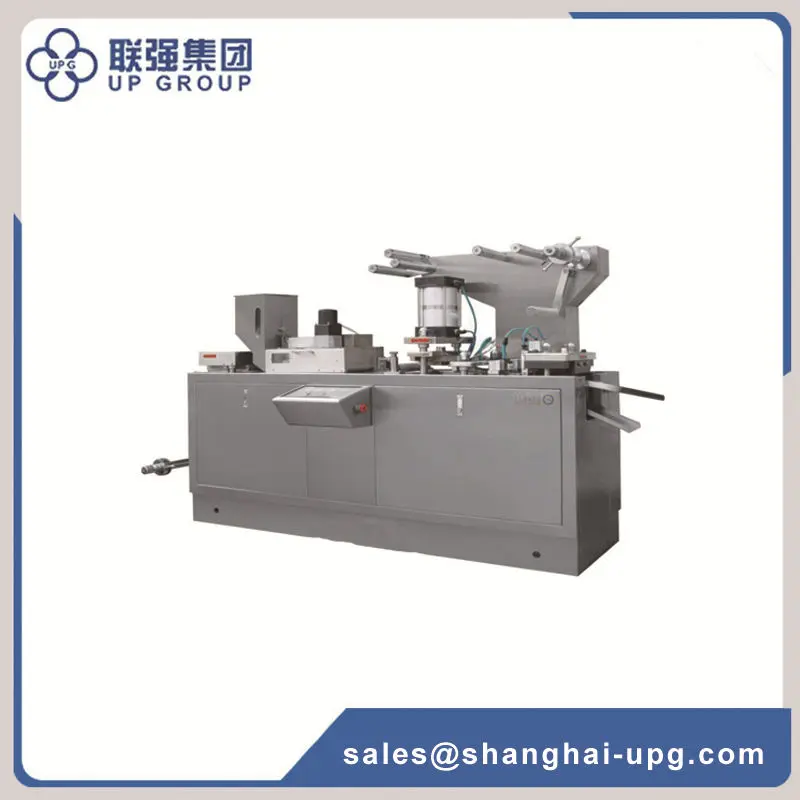In the field of packaging technology, blister packaging has become an important solution for a wide range of industries, especially in the pharmaceutical, food and consumer goods sectors. At the centre of this process is the blister packaging machine, a sophisticated piece of equipment designed to produce safe, efficient and great looking packaging. Understanding the purpose of blister packaging and the role of the blister packaging machine can provide valuable insight into modern packaging solutions.
Understanding Blister Packaging
Blister packaging is a type of pre-formed plastic packaging consisting of cavities or pockets made of moldable (usually plastic) and sealed with a backing material (usually aluminium or cardboard). This packaging method is widely used for items such as tablets, capsules and other small products. Blister packs are designed to provide easy access to individual products as well as a barrier to environmental factors.
The main uses of blister packaging
Protection: One of the main purposes of blister packaging is to protect the product from external factors. The sealed environment created by blister packaging protects products from moisture, light and air, which can reduce the quality of medicines and food products. This is particularly important for medicines that require strict adherence to storage conditions.
Evidence of tampering: Blister packs clearly show tampering and if the blister is opened, the integrity of the package is compromised, thus preventing unauthorised lifting, a feature that is particularly important in the pharmaceutical industry where product safety is critical.
Convenience: Blister packs are designed for user convenience. They are easy to dispense single doses, making it easy for consumers to take the correct dose of a drug or product without the need for additional tools, which is particularly beneficial for elderly patients or people with disabilities.
Cost-effective: Blister packs are a cost-effective solution for manufacturers. The materials used are often cheaper than traditional packaging methods and the efficiency of blister packers can reduce labour costs and increase productivity.
Extended shelf life: Blister packaging can extend the shelf life of a product by providing a barrier against environmental factors, which is particularly important for pharmaceuticals where expiry dates are critical. The ability to maintain product integrity over time reduces waste and increases customer satisfaction.
Branding and marketing: Blister packaging offers branding and marketing opportunities. Transparent plastics allow consumers to see the product, thus enhancing its appeal. In addition, the backing material can be printed with branding elements, instructions and other important information, making it a versatile marketing tool.
Meanwhile, to introduce you to a product made by our company, LQ-DPB Automatic Blister Packing Machine

The machine is specially designed for hospital dosage room, laboratory institute, health care product, middle-small pharmacy factory and featured by compact machine body, easy operation, multi-function, adjusting stroke. It is suitable for ALU-ALU and ALU-PVC package of medicine, food, electric parts etc.
Special machine-tool track type of casting machine-base, taken the process of backfire, maturing, to make the machine base without distortion.
Functions of Blister Packaging Machines
Blister Packaging Machines are essential for the efficient production of blister packs. These machines automate the blister packaging forming, filling and sealing process, ensuring consistency and quality of the final product. Following are some of the key features of blister packaging machines:
Forming: The first step in the blister packaging process is to form the plastic into the desired shape. Blister packaging machines use heat and pressure to mould the plastic into cavities that hold the product firmly in place.
Filling: Once the blister cavity is formed, the next step is to fill it with product. Blister packaging machines can be equipped with a variety of filling systems to accommodate different types of products, from tablets to small consumer products.
Sealing: Once the filling is complete, the blister pack must be sealed to ensure the product is protected. Blister packaging machines use either heat-sealing or cold-sealing technology to bond the plastic to the backing material to form a secure package.
Cutting and finishing: The final step is to cut the blister pack into individual units and apply any necessary finishing touches, such as labelling or printing expiry dates. This ensures that the product is ready for distribution and sale.
Efficiency and speed: Modern blister packaging machines are designed for high-speed production, enabling manufacturers to meet demand without compromising on quality, and for industries where time-to-market is a competitive advantage, this efficiency is vital.
In short, blister packaging serves a variety of purposes, including product protection, user-friendliness and extended shelf life. Blister packaging machines play a key role in this process by automating the production of blister packaging and ensuring efficient and safe product packaging. As the industry continues to evolve, the importance of blister packaging and the technology behind blister packaging machines will only continue to grow, making them an indispensable tool in the packaging industry.
Post time: Oct-10-2024
